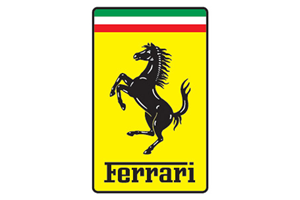


This edition of the Ferrari 340 Mexico is the 5 speed / Manual version and was first brought out in 1952. This was at around the same time as the introduction of the 1953 Alfa-Romeo Disco Volante 1900 Touring Coupe and the 1952 Alfa-Romeo Disco Volante 1900 Touring Spider.This particular Ferrari 340 has a 4102cc Naturally Aspirated Petrol powerplant with 12 cylinders in a V formation.
The 340 shares its Petrol V12 engine configuration with the likes of the 2021 Aston-Martin Valkyrie Coupe 6.5 V12 and the 2021 Aston-Martin Valkyrie Spider 6.5 V12. If you're looking for other fast cars which share the 340's Rear Wheel Drive, Coupe combination then how about the 1982 Fiat X1/9 1.5 8V or the 1965 Aston-Martin DB6 1965.
Weighing in at 900 kgs (1984 lbs) this makes the Ferrari 340 Mexico in the same weight category as the 2013 Alfa-Romeo 4C 1.8 Turbo or the give or take 50kg.
In terms of power the 4102cc 24V V12 engine produces 280 bhp (208 kW) @ 6600 rpm similar to the 2023 Porsche Cayenne E-Hybrid 3.0 V6 Turbo (300 bhp) or the 2023 Porsche Cayenne Coupe E-Hybrid 3.0 V6 Turbo (300 bhp).
The Naturally Aspirated V12 throws out 228 lb-ft (309.1 Nm) @ 4500 rpm placing it with cars of similar torque performance figures such as the 2022 Mini Cooper John Cooper Works Cabrio 2.0 Turbo (236 lb-ft) or the 2020 McLaren Sabre 4.0 V8 Twin Turbo (206 lb-ft).
If one combines the weight with power or torque performance for the Ferrari 340 you can get a better idea of it's real world performance.
![Mercedes SLS AMG Roadster GT - [2012] image Mercedes SLS AMG Roadster GT - [2012] image](/editionimages/1534.jpg)
The 2012 Mercedes SLS AMG Roadster GT (336.0 bhp per ton) has similar Bhp Per Ton stats as the Ferrari 340.
The Ferrari 340 has a Power to weight ratio of 311.1 bhp per ton and 253.3 lb-ft per ton. Bhp Per Ton figures of the 1952 340 competing with the 2012 Mercedes SLS AMG Roadster GT (336.0 bhp per ton) or the 2019 Aston-Martin Vantage AMR 4.0 V8 Turbo (335.5 bhp per ton).
If you agree with the late great Carroll Shelby then arguably an even better indicator of potential performance, Torque. Use weight as well and you end up with - Torque per ton, with the Ferrari 340 generating around 253.3 lb-ft per ton. If you're curious as to what other cars have as much torque to weight then look no further than the 2011 Ferrari 458 Spider 4.5 V8 (278.3 lb-ft per ton) or the 1968 Dodge Coronet Hardtop R/T 7.2L V8 440 (278.0 lb-ft per ton).
With a 0-60mph time of 6.00 secs or a 0-100km/h (0-62mph) of 6.2 secs, this made the Ferrari 340 Mexico as fast as the 2019 Land-Rover Defender 110 3.0 Turbo (6.00 secs) the 2017 Toyota Century 5.0 V8 (6.00 secs) the 2017 Dodge Challenger GT 3.6 V6 AWD (6.00 secs) the or the 2015 Seat Leon ST Cupra 265 DSG (6.00 secs). This Ferrari 340 Mexico is also faster than the 2017 Maserati Ghibli 3.0 V6 Diesel (6.10 secs) the 2017 Hyundai i30 N 2.0 Turbo (6.10 secs) the 2017 Land-Rover Velar 3.0 SDV6 300 (6.10 secs) the and the 2016 Mini Cooper Clubman John Cooper Works 2.0 Turbo Auto (6.10 secs).
When talking about the performance of the Ferrari 340 on the drag strip it can reach a quarter mile in an estimated 12.19 secs @ 112.3 mph. Similar performance down the quarter mile can be found with the the 1965 Jensen CV8 FF 6.3L V8 (12.13 secs), the 2017 Maserati GranCabrio MC 4.7 V8 (12.13 secs), and the 1967 AC 428 Coupe 7.0L V8 (12.14 secs).
Modern performance cars are often artificially restricted to 155mph. The 1952 version of the Ferrari 340 Mexico has a maximum speed of 142mph.
If maxing out your car on the AutoBahn is your thing and you're wondering what's faster than the 1952 Ferrari 340 Mexico then how about the 2014 Mini Cooper John Cooper Works 2.0 Turbo (153 mph), the 2004 BMW X5 4.8is V8 (153 mph), or the 2002 Volkswagen-VW Golf R32 (153 mph).









Chevrolet Corvette C3 427 V8 Convertible
Engine: Naturally Aspirated Petrol | 6996cc 16v V8
Top Speed: 139 mph
0-60mph: 5.50 seconds

Mitsubishi Lancer Evo VIII MR FQ 400
Engine: Turbo Petrol | 1997cc 16v St4
Top Speed: 281.6 kph
0-100kph: 3.5 seconds



















